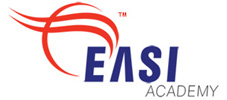 |
Preface to Tennis |
Whenever one endeavors to write something new on a topic that has been written on many times before, and by very skilled and knowledgeable people, one must ask if they really have anything new to say. For example, there is Winning the Mental Match, Think to Win, and The Winner's Mind by Allen Fox; there is The Physics and Technology of Tennis by Brody, Cross and Lindsey; there are books on conditioning for tennis such as Tennis Anatomy and Complete Conditioning for Tennis by Roetert, et. al.; There is the classic text of Plagenhoef, Patterns of Human Motion, which set the standard for the analysis of sports; and, his application of this work to tennis in the Fundamentals of Tennis. And there is the integrated and comprehensive semi-textbook of Kriese Coaching Tennis which is a valid effort to set forth tennis coaching in a form more closely aligned with textbook formats. But there are more: Complete Conditioning for Tennis by Roetert and Ellenbecker, Tennis Training by Kovacs, Chandler and Chandler, Tennis Tactics by the USTA, The Mental Game by Loehr and this is not a complete list of the "technical" books on tennis. In addition to these remarkable works there are numerous popular and semi-formal works of importance to tennis training. Some are accessible to the lay reader, such as Gilbert's Winning Ugly, Goffi's Tournament Tough, Agassi's Open, Tilden's Match Play and the Spin of the Ball, Laver's The Education of a Tennis Player, Braden's Mental Tennis and works by Laver and Collins describing the history of tennis. Further, there are works of importance from masters like Joe Dinoffer who has developed an array of component based training aids based on his theory of tennis. There are implications concerning the right approach to training and what training standards should be implicit in Joe's work; these must be recognized, understood and integrated into any program of instruction. Further, still, the era of the internet and high speed video has contributed extensively to an understanding of tennis technique that was impossible during the early stages of tennis documentation provided by important individuals such as Tom Stow. Of particular note in this regard is the pioneering video work of John Yandell. It must be mentioned that Dick Gould, while he has not written extensively relative to his vast knowledge of tennis, is a leading figure in tennis coaching theory and was also a key resource in my research based on the years I worked for him in California. All of these works on tennis are further supported by research papers and textbooks such as Exercise Physiology by McArdle, Katch and Katch, Freeman's Neurodynamics, Langer's seminal works on the nature of the human learning process, neural science research such as is compiled in the tome by Kandel, Schwartz and Jessell. As if this is not enough, there are broader "semi-texts" on Nutrition, Coaching, First Aid, Conditioning, such as the work of Etcheberry, etc. In short almost every area of tennis science has been addressed, directly or indirectly, by someone, in many cases, by someone very distinguished who is an expert in their field. See References. With all the excellent work that has been done to date on the subject of tennis, one must ask "what more is there to do?" Given the above summary of research and documentation on tennis not withstanding, what has not been done is to write a text that summarizes, integrates and illustrates all of these results into a single reference, and includes the many new and unaddressed advances in scientific and academic research in the fields of neuroscience and the psychology of the human learning process. To provide this integration and extension is the primary goal of this text. In addition to integrating the science, tradition and technology of tennis, this textbook will take a step far beyond any text conceived to date: The text will draw on history, mathematics, archeology, biology, and literature to provide many of the underpinnings of strategy, tactics and drill design as well as providing a road map to home schooling for players seeking to advance their craft while obtaining an education that will assure them of the chance to enter college at any point they desire. IN SUMMARY: In addition to this text resting on the advances of the many tennis experts that have come before, there are four original contributions that this text seeks to make:
|
||